N+MAIRA NAIMEK+ IB+R+
Sweet Science Court (Spanish: Patio de Ciencia Dulce) is an indigenous community located in the near of Leticia-Taparacá in the Amazonas region. In the early 19th century, the majority of the population of ethnic groups such as Huitoto, Murui, Muina, Ocaina, and Yukuna in the Amazon were wiped out by the genocide of the rubber industry. Displaced members of various ethnicities founded the commune N+MAIRA NAIMEK+ IB+R+. They have been living together peacefully since then. Their current struggle is the fight to preserve their culture.
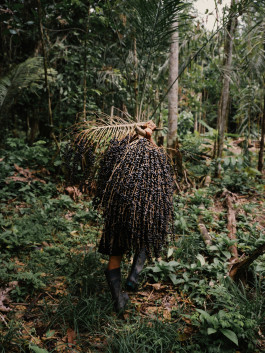
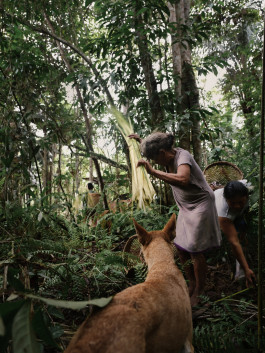
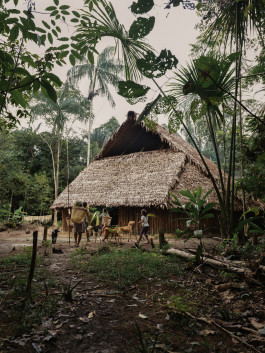
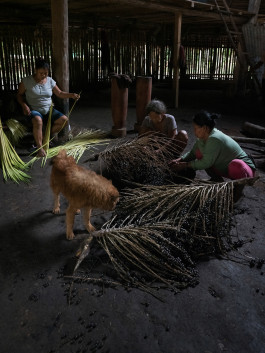
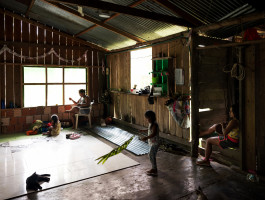
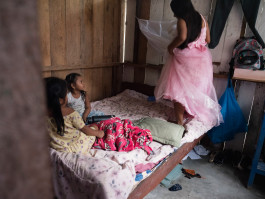
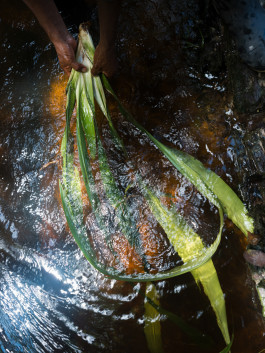
The community nurtures a science based on high ethical values, ancient knowledge, and a life plan to promote joy, strength, protection, health, and positive thoughts. The well-intentioned phrase 'La Palabra Dulce' ('The Sweet Word') is at the core of their communication and thinking. Their worldview influences how they interact with their environment, seeing humanity and nature as inseparable.
Western influence is noticeable, affecting community cohesion, which has both enabled and complicated their survival. I spent a month accompanying, photographing, and interviewing these people to document the beauty of what I saw and capture the current state of their culture.
The project was developed in collaboration with Arnold J. Vásquez Gomez, indigenous leader, and Andrea Lasprilla López, anthropologist.
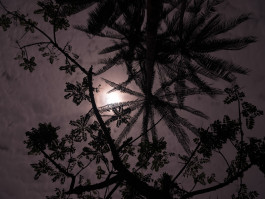
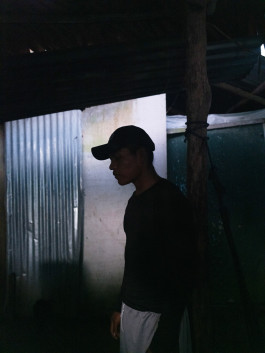
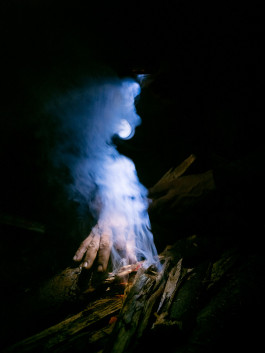
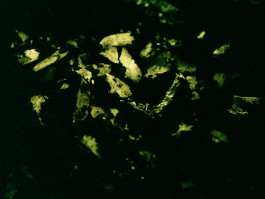
A century ago, the rubber companies, in this case, the Casa Arana, carried out this massacre of the indigenous population. It is yet another example of how, blinded by greed, humanity loses sight of its own values.
La Chorrera is located in the Colombian Amazon, on the banks of the Putumayo River, near the border with Peru and Brazil. There is no longer a cemetery that tells the story of this tragedy. All that remains are the accounts of the elders, who speak of the atrocities committed by the "whites."
Walter
Ethnicity: Murui
Originally, the Tikuna people inhabited this land. My grandfather Isidro, my father’s father, was one of the first elders to arrive here. He met with a Tikuna from Brazil, and together they formed the first traditional alliance in this place. The Tikuna gave my grandfather seeds to plant, showed him the Takana River, and handed over his own territory to him.Of course, we had our own traditional knowledge, but the Tikuna provided us with the first official guidelines for conservation and environmental management. This way, we were given rules to protect nature and to only take what we needed to live.
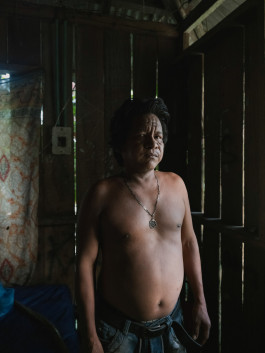
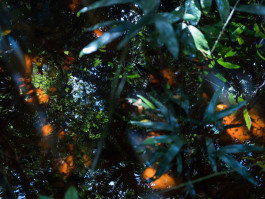
Walter „El Terror“
Ethnicity: Ocaina
In the past, you could see the tracks of jaguars and pumas everywhere. Now, they’ve moved farther away. The rivers used to be full of giant otters, large fish, and many sloths, but some people kill them. I tell them not to kill the animals. There aren’t as many left. Recently, someone here killed a sloth. I told him, 'This is the last time you do that. If you want to, go far away, so I don’t catch you!'When the water levels rose, I even saw a dolphin. I enjoy watching the animals. Yes... that’s how it is here in the jungle.
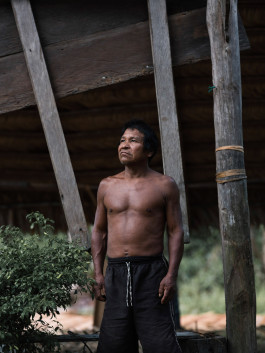
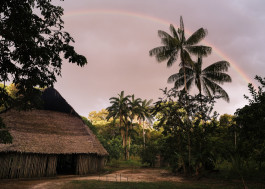
Abuela Laura
Ethnicity: Murui-Huitoto
There are no people left, they are either buried or hiding so they won’t be captured. Only three from our family are still alive, my uncle said. He saw how they were tied with ropes to a mast, with a heavy ball attached to them. Then they started beating them. I didn’t believe him. He got angry, raised a stick, and said, 'What do you think? You’ll pay with your life!' When I arrived, I understood immediately, like a blow. There they were, all buried.
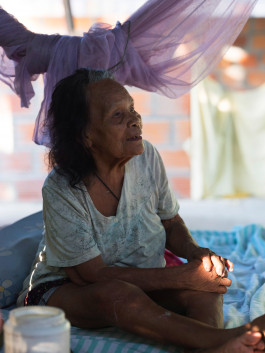
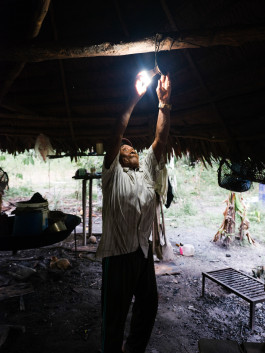
Nikanor
Ethnicity: Murui, Indigenous Leader of the Community
Our God has blessed the peoples of all cultures. And as a visitor to our people, I sing this song for you. It is called, 'The daughter of the Creator God has come to visit us and learn about our culture.
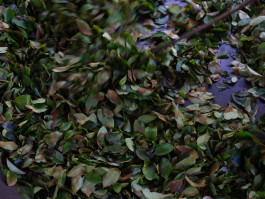
Mambé and Ambil
Tobacco is the foundation for preparing Ambil, a tobacco syrup obtained by boiling the leaves. In the Huitoto culture, offering Ambil is a symbol of friendship and solidarity; it is also considered a sacred substance in both medical and ritual contexts.
Coca enables the wise man’s word. Inside the Maloca, men gather at night in a designated spot to chew coca, and during this practice, the cosmological and mythical knowledge of the ancestors is passed down.
Both substances represent strength and promote the kind, well-intentioned word, known as "La Palabra Dulce" (The Sweet Word). Traditionally, the preparation and consumption of these substances are reserved for men. It is a religious practice governed by strict, mythologically grounded rules.
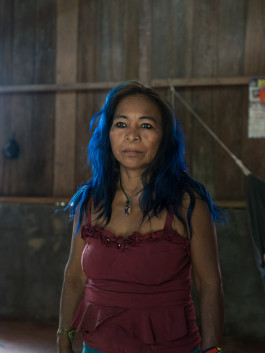
Vicky
Ethnicity: Ocaina
Since I was a little girl, I was fascinated by the Mambe ritual. But it was only allowed for men. Then I traveled to Chorrera, the root of our culture. There, I asked the elders for permission. They granted it to me because I come from a clan whose leader was also a Mambeadora.
For 20 years, I have been producing Mambe and Ambil in my own Maloca. Originally, it was a woman who initiated the Mambe ritual. Only then did the man come and take control of it. So how is it possible that women are now forbidden to practice it?
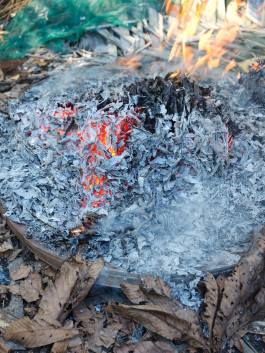
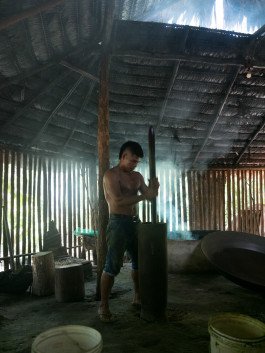
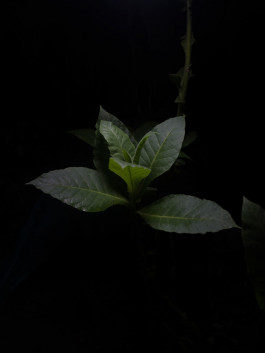
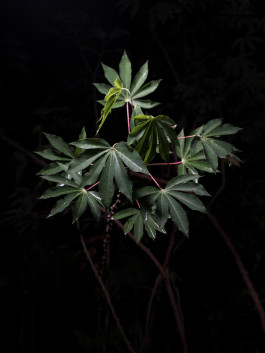
Arnold
Ethnicity: Murui-Muina
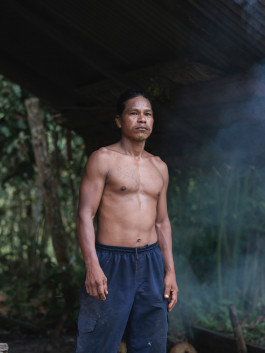
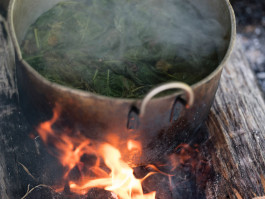
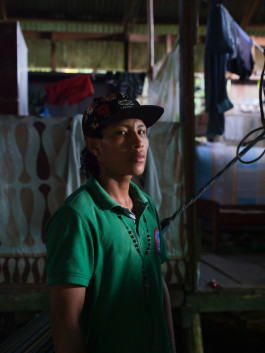
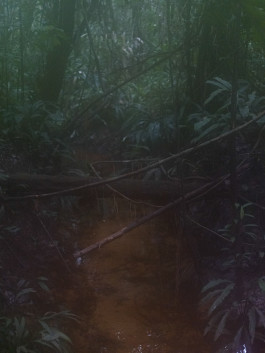
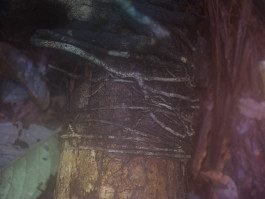
Cayetano „El Diablo“
Ethnicity: Muina
Every traditional festival has its own story. Here in my Maloca, many different festivals take place. The Festival of Bamboo, the Festival of Fruits, and many more. During the 'Lladico' festival, we dance on this long, processed beam. At one end, there is a woman painted, at the other, a caiman, and in between, a snake.
The men rhythmically stomp on it with one foot throughout the night, creating a strong vibration and loud sound as the beam hits the ground. These powerful stomps help heal the world.
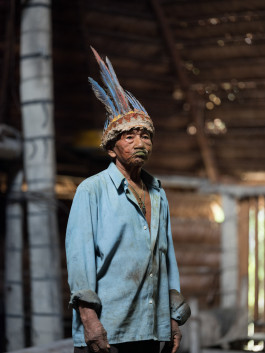
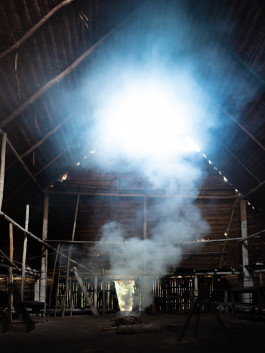
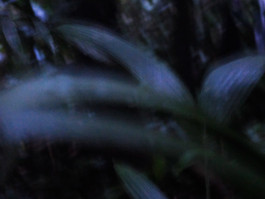
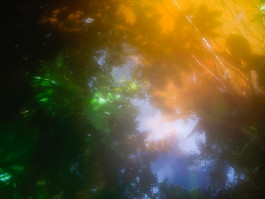
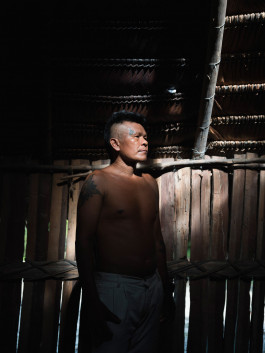
Omar Yukuna
Ethnicity: Yukuna
At the age of three or two, your father takes you to a shaman. He heals you first to see if you have the ability to become a traditional doctor, healer, singer, advisor, or a cacique. He decides if you are capable. If he believes you are a very intelligent child, you will become a traditional doctor. To become a doctor, you must endure seven years of training. It’s like the time spent at a university. We learn a lot about history, singing, prayer, healing, and how to interact with the world. As a student, you are not allowed to think about women, as it’s bad for us, and even worse when they are menstruating. We are very cautious about this because it can affect the training. It’s a real trial. Only after you graduate can you seek a wife. Then, you are ready to face the world and survive. That's when you’ve made it.

N+MAIRA NAIMEK+ IB+R+
Sweet Science Court (Spanish: Patio de Ciencia Dulce) is an indigenous community located in the near of Leticia-Taparacá in the Amazonas region. In the early 19th century, the majority of the population of ethnic groups such as Huitoto, Murui, Muina, Ocaina, and Yukuna in the Amazon were wiped out by the genocide of the rubber industry. Displaced members of various ethnicities founded the commune N+MAIRA NAIMEK+ IB+R+. They have been living together peacefully since then. Their current struggle is the fight to preserve their culture.
The community nurtures a science based on high ethical values, ancient knowledge, and a life plan to promote joy, strength, protection, health, and positive thoughts. The well-intentioned phrase 'La Palabra Dulce' ('The Sweet Word') is at the core of their communication and thinking. Their worldview influences how they interact with their environment, seeing humanity and nature as inseparable.
Western influence is noticeable, affecting community cohesion, which has both enabled and complicated their survival. I spent a month accompanying, photographing, and interviewing these people to document the beauty of what I saw and capture the current state of their culture.
The project was developed in collaboration with Arnold J. Vásquez Gomez, indigenous leader, and Andrea Lasprilla López, anthropologist.



Walter
Ethnicity: Murui
Originally, the Tikuna people inhabited this land. My grandfather Isidro, my father’s father, was one of the first elders to arrive here. He met with a Tikuna from Brazil, and together they formed the first traditional alliance in this place. The Tikuna gave my grandfather seeds to plant, showed him the Takana River, and handed over his own territory to him.Of course, we had our own traditional knowledge, but the Tikuna provided us with the first official guidelines for conservation and environmental management. This way, we were given rules to protect nature and to only take what we needed to live.



Walter „El Terror“
Ethnicity: Ocaina
In the past, you could see the tracks of jaguars and pumas everywhere. Now, they’ve moved farther away. The rivers used to be full of giant otters, large fish, and many sloths, but some people kill them. I tell them not to kill the animals. There aren’t as many left. Recently, someone here killed a sloth. I told him, 'This is the last time you do that. If you want to, go far away, so I don’t catch you!'When the water levels rose, I even saw a dolphin. I enjoy watching the animals. Yes... that’s how it is here in the jungle.

A century ago, the rubber companies, in this case, the Casa Arana, carried out this massacre of the indigenous population. It is yet another example of how, blinded by greed, humanity loses sight of its own values.
La Chorrera is located in the Colombian Amazon, on the banks of the Putumayo River, near the border with Peru and Brazil. There is no longer a cemetery that tells the story of this tragedy. All that remains are the accounts of the elders, who speak of the atrocities committed by the "whites."


Abuela Laura
Ethnicity: Murui-Huitoto
There are no people left, they are either buried or hiding so they won’t be captured. Only three from our family are still alive, my uncle said. He saw how they were tied with ropes to a mast, with a heavy ball attached to them. Then they started beating them. I didn’t believe him. He got angry, raised a stick, and said, 'What do you think? You’ll pay with your life!' When I arrived, I understood immediately, like a blow. There they were, all buried.


Nikanor
Ethnicity: Murui, Indigenous Leader of the Community
Our God has blessed the peoples of all cultures. And as a visitor to our people, I sing this song for you. It is called, 'The daughter of the Creator God has come to visit us and learn about our culture.

Mambé and Ambil
Tobacco is the foundation for preparing Ambil, a tobacco syrup obtained by boiling the leaves. In the Huitoto culture, offering Ambil is a symbol of friendship and solidarity; it is also considered a sacred substance in both medical and ritual contexts.
Coca enables the wise man’s word. Inside the Maloca, men gather at night in a designated spot to chew coca, and during this practice, the cosmological and mythical knowledge of the ancestors is passed down.
Both substances represent strength and promote the kind, well-intentioned word, known as "La Palabra Dulce" (The Sweet Word). Traditionally, the preparation and consumption of these substances are reserved for men. It is a religious practice governed by strict, mythologically grounded rules.


Vicky
Ethnicity: Ocaina
Since I was a little girl, I was fascinated by the Mambe ritual. But it was only allowed for men. Then I traveled to Chorrera, the root of our culture. There, I asked the elders for permission. They granted it to me because I come from a clan whose leader was also a Mambeadora.
For 20 years, I have been producing Mambe and Ambil in my own Maloca. Originally, it was a woman who initiated the Mambe ritual. Only then did the man come and take control of it. So how is it possible that women are now forbidden to practice it?




Arnold
Ethnicity: Murui-Muina




Cayetano „El Diablo“
Ethnicity: Muina
Every traditional festival has its own story. Here in my Maloca, many different festivals take place. The Festival of Bamboo, the Festival of Fruits, and many more. During the 'Lladico' festival, we dance on this long, processed beam. At one end, there is a woman painted, at the other, a caiman, and in between, a snake.
The men rhythmically stomp on it with one foot throughout the night, creating a strong vibration and loud sound as the beam hits the ground. These powerful stomps help heal the world.


Omar Yukuna
Ethnicity: Yukuna
At the age of three or two, your father takes you to a shaman. He heals you first to see if you have the ability to become a traditional doctor, healer, singer, advisor, or a cacique. He decides if you are capable. If he believes you are a very intelligent child, you will become a traditional doctor. To become a doctor, you must endure seven years of training. It’s like the time spent at a university. We learn a lot about history, singing, prayer, healing, and how to interact with the world. As a student, you are not allowed to think about women, as it’s bad for us, and even worse when they are menstruating. We are very cautious about this because it can affect the training. It’s a real trial. Only after you graduate can you seek a wife. Then, you are ready to face the world and survive. That's when you’ve made it.

mail@mirellafrangella.com +49 (0)152 3456 5620
Impressum und Datenschutz